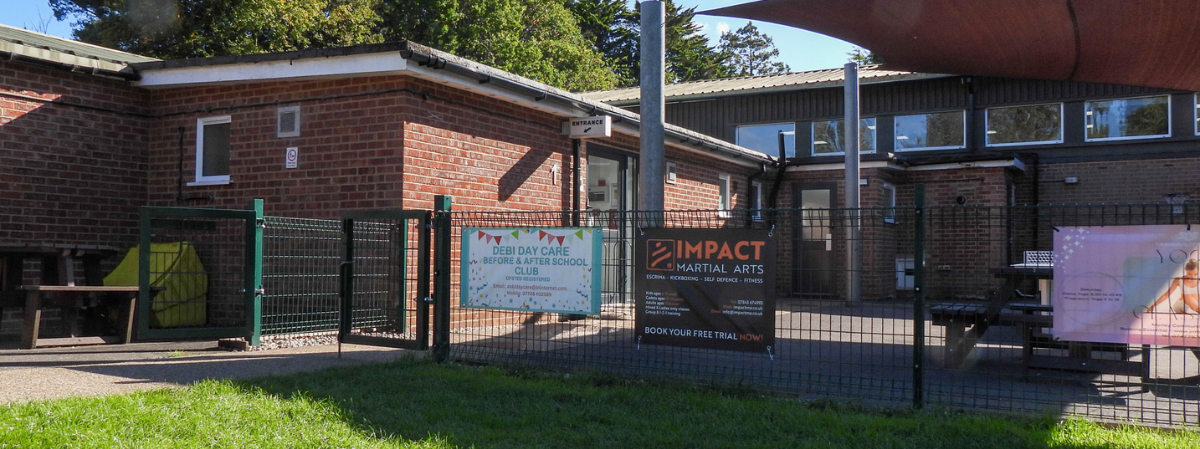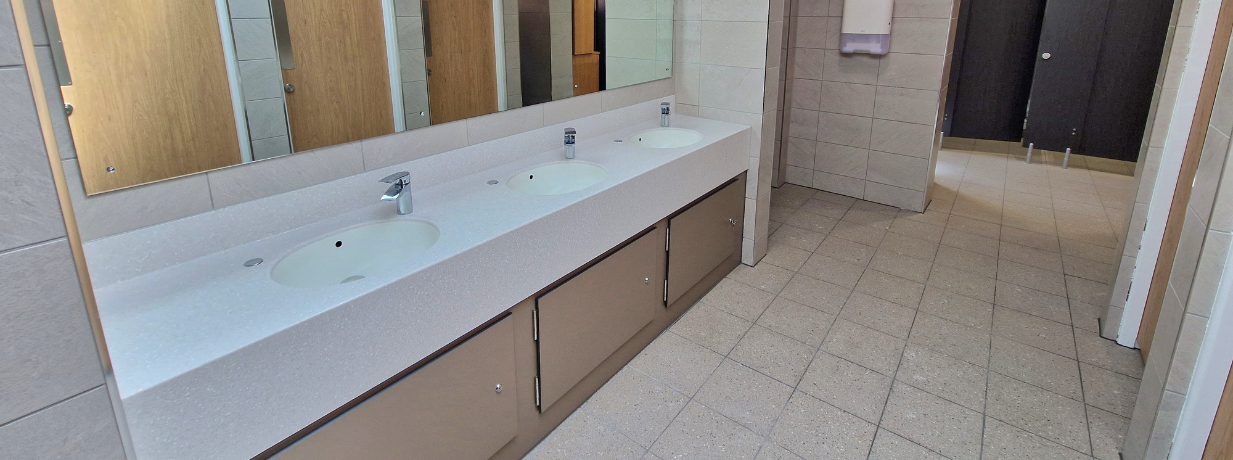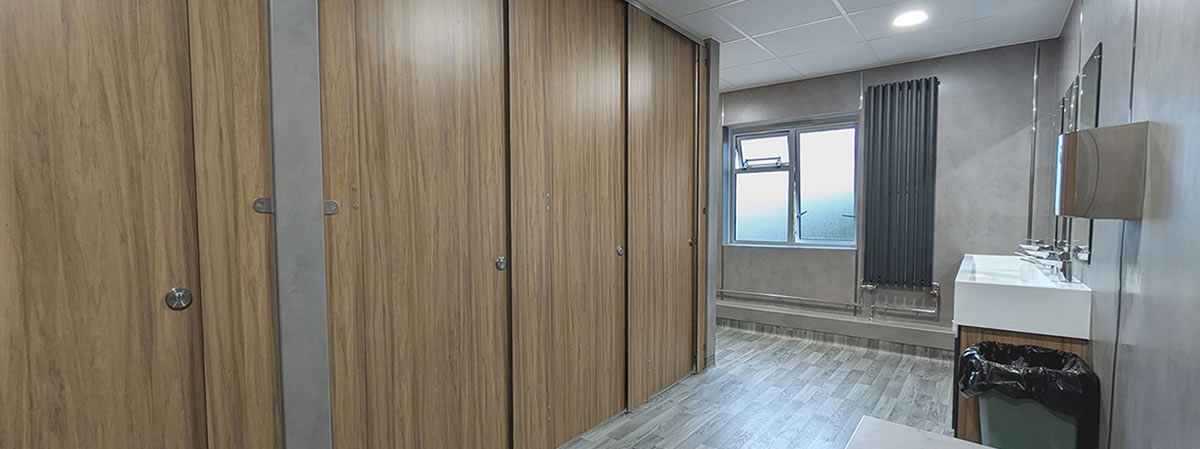Thermostatic Mixing Valves (TMVs)
Thermostatic Mixing Valves: Keeping the Vulnerable Safe
Our range of TMV2 and TMV3 mixing valves is compliant with Government Health and Safety standards for use in Hospitals and the Health Care sector, as well as in schools and other locations used by children and vulnerable adults at risk of scalding. They are also referred to as blending valves.
TMVs are recommended for installation with all taps and showers in all commercial washroom environments, including hotels, restaurants and other public washroom areas, as they prevent injuries such as scalding. Our Thermostatic Mixing Valves are available to suit 15mm, 22mm, and 28mm pipework connections, with additional options including integral isolators on many of our mixing valves.
TMV stands for Thermostatic Mixing Valve. They mix hot and cold water to safely add warm water to taps and showers, ensuring users are never scalded. This is particularly important in areas with more vulnerable users, such as children, the elderly, and the disabled. Our competitive range of Thermostatic Mixing Valves (TMVs) can be ordered online for fast, direct delivery.
We work closely with many of the leading commercial plumbing manufacturers to sell safe and reliable thermostatic mixing valves designed to last and keep users safe from scalding. Suppliers include Bristan, Franke, Delabie, and Inta. All values are delivered from our UK stock and are available within 48 hours. Available with manufacturer warranties.
Many common questions and general advice on commercial taps and TMVs can be found by reading our blog. Of particular relevance is the questions and information on Washroom Taps.
If you would like any advice on purchasing Thermostatic Mixing Valves, please contact the Commercial Washrooms team who will be happy to help with any questions you have.
Mixing Valve FAQ
Do I need a Mixing Valve?
A mixing valve will help you get the desired water temperature as it mixes a hot and cold water supply before it runs out of your taps or shower head. Although it isn’t necessary to have a mixing valve, it is safer to have one in your plumbing system as it reduces the risk of scalding - this is particularly important for those who are more vulnerable, such as children, the disabled and the elderly, and in commercial settings where employee liability can be an issue.
How does a Shower Mixing Valve work?
Mixing valves mix hot and cold water so it is safe and more pleasant for those using taps or showers; thermostatic mixing valves sense the water temperature before it flows from taps or shower heads.
A thermostatic mixing valve works to regulate temperatures by using the following:
- Thermostatic element - this part of the system is attached to a piston and is located in the valve, which is sensitive to the temperature of water flowing through it. As the water flows, the thermostatic element will either increase or decrease in size.
- Piston - When the thermostatic element increases in size due to the temperature, the piston will move across entry portals of the hot and cold water flows, which will lessen the flow of the hot water and allow for more cold water to pass through - this will ultimately ensure that the same safe temperature is maintained.
- Return spring - this works the opposite way to pistons as it will limit the amount of cold water entering the tap or shower head. It moves the piston back across the entry portals for hot and cold water flows when the thermostatic element contracts due to low temperatures. This helps prevent users from becoming too cold when using showers or taps.
How to change Thermostatic Mixing Valves (shower)
How easy it will be to change a thermostatic mixing valve will depend on the type of thermostatic mixing valve. For example, if you have a concealed shower mixing valve, you may need a professional, as part of the wall must be removed to access this. Here’s how to replace a thermostatic mixing valve for a shower:
- Isolate the water supply to the old shower
- Turn the shower head on and allow any remaining water in the pipework or showerhead to run out.
- Dismantle your old mixer shower pipework
- Remove the existing shower mixing valve and covers
- You now need to flush the pipework through using a bucket to cover the end of the hot and cold water feeds.
- Fit in your new thermostatic mixing valve
- Position your rail bracket
- Time to turn the water supply back on and test that your shower is working correctly.
How to identify a Shower Mixing Valve
You may need to identify the brand of your shower mixing valve if you’re looking to replace it, as different brands’ parts may vary. You can do this by closely inspecting your shower mixing valve for markings.
How to tell if Mixing Valve is bad
There are a few things to look out for if you suspect that your mixing valve is bad and not working properly. Look out for:
- Dripping from the shower or taps
If your taps or shower drips when the water is turned off, this could be a sign that your hot water mixing valve is not working properly. It may be a case of your mixing valve not being in the correct position, which allows water to escape. - No hot water
If only cold water comes out of your shower or taps, this indicates an issue with either your mixing valve or water heater. - Inconsistent water temperatures
If you notice that the water running from your taps or shower is inconsistent, you may need to replace it with a newer model. - Low water pressure
If you notice a drop in the pressure of your shower, your mixing valve may be blocked.
If you experience any of these issues, it may be a good idea to ask a plumber to offer their advice, and you may need to purchase a newer mixing valve to replace your current one. Your mixing valves must work properly as they regulate the temperature of the water flow, which is particularly important for those who are vulnerable, such as children, the disabled and the elderly.









